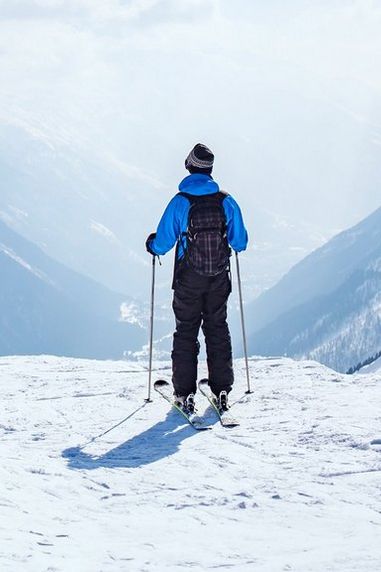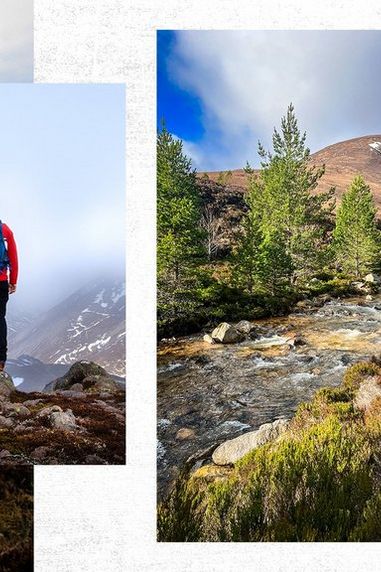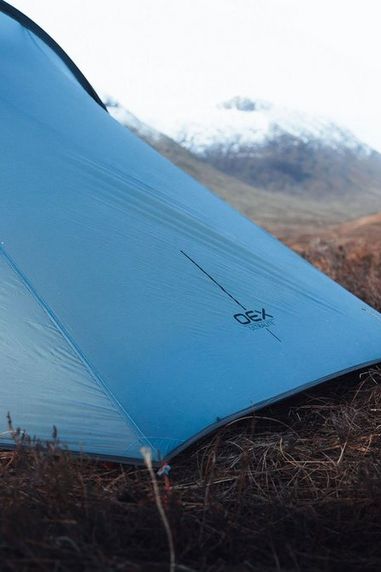Few, if any, British journeys are as iconic as Land's End to John O'Groats. From Cornwall to the far reaches of Scotland, the 'End-to-End' or LeJog (in internet speak) is the furthest you can go within the British Isles without changing direction.
Most people make the journey on two wheels. However, as Liam Brown showed in his epic long-distance hike, it's possible to WALK from one end of the country to the other.
IIf you have a summer to spare then why not consider seeing the best that Britain has to offer? You no doubt have questions; read on as we try to answer them.

How far is it?
That's the big question right?
In truth, there is no firm answer. The traditional distance by road is 874 miles but there are countless alternative routes to be taken. The real joy in walking the LeJog is the variety of ways to approach the task.
The standard route heads up the west coast of England, with the option to take an eastern, western or central path through Scotland. There are several good guidebooks that offer useful route maps. Andy Robinson's The End to End Trail is a good place to start. Beyond that, though, feel free to carve your own way up the country.
You must start at Land's End, which means crossing Cornwall. Equally, you must finish at John O'Groats, which means making your way across the wilds of Sutherland in the reaches of Scotland. In between these points you can opt for a straight line or zigzag to your heart's content.

How long does it take?
Another question without a strict answer (this is a bit of a theme on the LeJog).
First, the time needed will depend on the route taken. Generally speaking (very generally), if you are doing the whole thing in one push you will need around 75 days of walking. Depending on your route length this will mean an average of 10-12 miles per day.
Remember that you will need rest days on top of this though. The average trip – again, that means little when you're discussing such a mammoth task – takes around 90 days including rest.
Obviously, the longer the day the more time for walking. For that reason, it's advisable to go in the late spring and summer. The chances of better conditions will also be helpful.
 The cliffs at Land's End - Start here
The cliffs at Land's End - Start here
 The Stacks of Duncansby at John O' Groats - And your're done!
The Stacks of Duncansby at John O' Groats - And your're done!
What should I take?
The list of things you 'might' need is potentially endless. For the purpose of this brief guide, however, we'll stick to the absolute essentials that you can't do without. There will be shops along the way after all.
In terms of clothing, you can take as much or little as you feel comfortable carrying. There are some some none-negotiables necessary for the unpredictable conditions. Waterproofing and insulation are a must as you WILL encounter adverse weather somewhere along the way. But also have some comfortable clothing for sunny days and down-time. Don't take too much; it's fine to not be the best-dressed hiker.
Gear
- Map and compass - OS Maps are the obvious choice. They now offer an excellent phone app but you may not wish to rely on phone battery in a pinch
- A well-stocked first aid kit - including bandages, plasters, insect-repellent and bite cream etc
- Utility knife / tool - for everything from opening a can of beans to carving your name in a rock along the way
- A good torch - with replacement batteries
- Water bottle or flask
- Walking poles (optional)
Clothing
- Waterproof Jacket and trousers - a jacket with an accessible map pocket is a serious help when it's wet and you need to consult the map often
- A fleece or thermal midlayer
- Technical tees or baselayers
- Gloves
- Hats - both lightweight cap and a woolly option for cold mornings
- Waterproof footwear - boots or shoes
- Comfortable shoes - for rest days or lighter terrain


Unless you are making the trip with a support driver, you will need to fit all of this into a reliable and comfortable backpack. You need to think carefully about the pack you choose. Make sure it has excellent breathability and a comfortable and supportive harness. You'll spend a long time wearing it and it needs to be your friend.
Where should I stay?
This is a question you need to broadly answer before you set off. If you opt for the B&B or hostel route this may cost quite a bit over the duration of the trip. Camping is a much cheaper option but you will be compromising on comfort. You'll also have to wholly reconsider your packing in order to fit a lightweight tent, sleeping bag and other camping essentials.
Regardless of which approach you take, it will be difficult to book accommodation for the entire journey in advance. Your pace, rest days, the weather – all of these may affect your timetable, meaning you are several days out after a few weeks on the road. The best solution is to liaise with a support team/person at home, who can book somewhere for you a few days in advance, based on a more accurate timetable.
 The dream at the end of the day
The dream at the end of the day
Any other tips?
- Rather than taking a dozen different OS maps, you can cut out the sections that cover your specific route. If you hate the idea of cutting up maps then why not plot the route online and print off individual pages? As well as saving on weight it will be much easier than wrestling a full-size OS map in the wind.
- Consult the Ramblers Association website for useful information on countryside access and rights of way
- Audiobooks, music or podcasts will help on the lonelier stretches of road. Take a device to play these – but keep your wits about you, especially on country roads where traffic can be a surprise.
- Socks are your best friend. Take enough pairs to ensure you ALWAYS have a dry pair handy. Merino wool is soft, breathable, sweat-wicking and hard-wearing. Consider waterproof socks for the muddier sections.
- Make sure you train. This doesn't mean a hundred mile walk but go on at least one multi-day trip in advance. This will prepare you for the rigour of walking all day then getting up to do it again.

This is the briefest intro to an epic journey. We've merely dipped a toe into all the information out there. If you are planning to tackle the LeJog, or if you have experience of doing it on foot or wheels, then get in touch with your questions and advice.
We hope you've all enjoyed National Walking Month 2019. Here's to another year of footing it around the country.




Comments